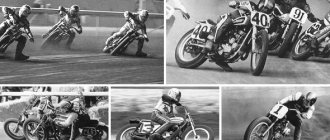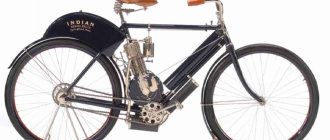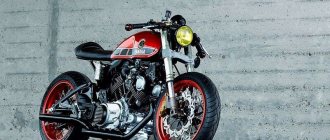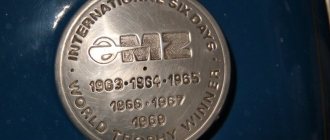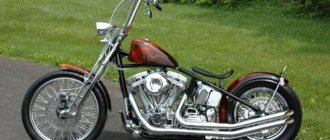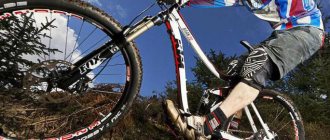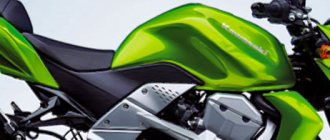This type of vehicle is energetic. Many fans of this type of technology want to try it out. BMW motorcycles find few rivals that can compete with them on asphalt surfaces.
But a flat road is not the only surface on which a BMW motorcycle can travel quickly. Bad roads are not scary for him. This model behaves well during dangerous turns and sharp turns. Its distinctive features are power, dynamism, comfort and stability.
You can buy a BMW motorcycle profitably and affordably with a full guarantee of quality, reliability and functionality, which cannot but please you. It is also worth paying attention to the fact that motorcycles are presented in a wide range depending on the level of power, technical parameters, build quality, and so on.
BMW history
BMW, Bayerisch Motoren Werke AG, is a German automobile company specializing in the production of passenger cars, sports cars, off-road vehicles and motorcycles. The headquarters is located in Munich.
In 1913, on the northern outskirts of Munich, Karl Rapp and Gustav Otto, son of the inventor of the internal combustion engine Nikolaus August Otto, created two small aircraft engine companies. The outbreak of the First World War immediately brought numerous orders for aircraft engines. Rapp and Otto decide to merge into one aircraft engine plant.
This is how an aircraft engine plant was established in Munich, which in July 1917 was registered under the name Bayerische Motoren Werke (“Bavarian Motor Works”) - BMW. This date is considered to be the year of founding of BMW, and Karl Rapp and Gustav Otto as its creators.
In 1923, the first motorcycle, the R32, came out of the BMW factory. At the 1923 Motor Show in Paris, this first BMW motorcycle immediately gained a reputation as a fast and reliable machine, which was confirmed by absolute speed records in international motorcycle racing in the 20s and 30s.
In 1955, the production of the R 50 and R 51 models began, opening a new generation of motorcycles with a fully sprung chassis, and the Isetta small car was released, a strange symbiosis of a motorcycle with a car. The three-wheeled vehicle, with a forward-opening door, was a huge success in impoverished post-war Germany. But due to the ensuing craze for large limousines and the associated losses, the company finds itself on the verge of collapse.
This is the only case in the entire history of BMW when the economic situation was incorrectly calculated and the cars released onto the market were not in demand. The question of the sale arises. She hastened to announce its purchase, but this was prevented by small shareholders, employees of the company, and its sales agents.
The beginning of 1999 marked the debut of the BMW X5, which became the world's first Sports Activity Vehicle: a car that uniquely combines elegance and practicality, thereby opening up a new dimension of mobility.
Currently, BMW , which began with a small aircraft engine plant, produces its products in five factories in Germany and twenty-two subsidiaries scattered around the world. This is one of the few automobile companies that does not use robots in factories. All assembly on the conveyor is done only by hand. The output is only computer diagnostics of the main parameters of the car.
For a long time I was looking for something to translate on the topic of the history of motorcycles, and at the end of last year, at the BMW Museum in Munich, I suddenly saw the book “BMW GS, The Complete Story,” which seemed very interesting to me. Below is the translation of its first part. My English is not very good, but I hope that it will be enough to implement my plans. So, let's go.
Preface.
When a small group of BMW engineers assembled the first prototype of what would become the first GS motorcycle, the R80G/S, in the late 1970s, no one could have imagined how extremely popular and important their creation would become. Now, almost 40 years later, the GS dynasty includes perhaps the most versatile, popular and successful motorcycles of all time.
GS series ( better known in Russia as “geese”
), which began in 1980 with the R80G/S, is now presented in the form of the R1200GS and its Adventure version. Its influence on the market has become so significant that now “really big enduros” (before the 800 cc R80G/S, the largest motorcycle in this class was the Yamaha XT500) have become a separate class of “adventure bikes” and any major manufacturer has models in this segment . The versatility and versatility of these motorcycles practically knows no bounds: the geese are ready to solve any problem from asphalt track days to long-distance off-road trips. Charlie Boorman, a member of the Long Way Round project, called the GS series "the Land Rovers of the motorcycle world."
It was a success from the very beginning: the first model was produced in twice the quantity originally expected. Today (like many previous years) BMW GS are considered the best-selling motorcycles in England. Over the past 30 years they have won races, earned the title of the best bikes for around the world, not to mention performing everyday tasks and have a huge following. This book is the full story of how it happened.
Phil West, 2014
Clarification: now the GS series consists of motorcycles of three lines: G, F and R. But this book describes the history of only the opposed “R” line.
BMW R1200GS 2013 release.
Chapter 1. The world before the advent of GS (1975-1979).
It's easy to assume that the birth of the first G/S is the work of a genius; after all, things that change the world don't just happen. The world of cars has its recognized geniuses: Ferdinand Porsche and his VW Beatle; Alec Issigonis and the avant-garde Mini; Colin Chapman and Lotus. The motorcycle world honors Edward Turner for the Triumph Bonneville, Tadao Baba for the Honda Fireblade and Massimo Tamburini for the Ducati 916.
But the thing is that G/S does not have a single creator father - there was no creative genius and there was no inspiration. In truth, it was more likely the opposite - recklessness, which, as BMW today admits, coincided with great luck.
It's also easy to imagine that the presentation of the first G/S in 1979 must have caused a sensation. Of course, it would be nice if the motorcycle that launched a new line, and later became the founder of a new class of motorcycles, a bestseller that provided BMW with many years of successful sales and simply a world-famous brand, was greeted with universal applause. But no. In fact, the R80G/S seemed like a bit of a weirdo to everyone. He was initially rejected by many as an unattractive curiosity. And, as often happens with things that change the world, the subsequent events came as a big surprise to everyone.
1.1. The dawn of the “trails”.
To fully understand the reasons for the emergence of G/S, why it came as a surprise and turned the usual order of things in the world of motorcycles upside down, it makes sense to talk about what happened in this very world and what place BMW occupied in it.
Before the advent of G/S, the idea of a trail bike—a machine legal for road use, but suitable for both asphalt and off-road riding—was just emerging. Focused off-road motorcycles for motocross, trials or even speedway, grass and flat trackers have been around for decades, but the first four-stroke "dual-purpose" motorcycle, the Honda XL250, wasn't released until 1972.
The Honda XL250 in 1972 was the first civilian four-stroke enduro to hit the mainstream market.
He had amazing success. The XL250 very quickly became popular, especially in the English market, as a “weekend” motorcycle. This was enough for other Japanese manufacturers to make very similar devices: single-barrel engines, long-travel suspensions, a pronounced “scrambler” design and minimalist road equipment.
The next shock came in 1975 with the introduction of the Yamaha XT500, the first of the so-called big four-stroke dual-sports that essentially set the upper limit for the class. The XT500 was already quite powerful, but if we talk about something even more serious, for example, about making the engine even more voluminous, then this would immediately affect the weight and vibration, which was unacceptable for an SUV. At the same time, increasing the number of cylinders then seemed truly absurd.
But where is BMW in this picture? In short, nowhere. Until the end of the 1970s, the Bavarian manufacturer was associated primarily with touring motorcycles, and the lightweight enduro from Munich looked like a very powerful road bike.
At the same time, BMW faced financial problems that were caused by a confrontation with the big Japanese four. In the 1970s, Honda, Suzuki, Kawasaki and Yamaha not only dominated the lightweight classes (as they had done since the 60s), but also began to encroach on BMW's holy of holies: the large-capacity motorcycle segment. The Japanese released 4-cylinder superbikes ( of course, the term was relevant for those years
) such as the CB750, GS1000 and Z900, offering a choice to suit every taste and budget in every market niche. So BMW, with its high prices, old-fashioned styling, air-cooled boxer twins and driveshafts, suddenly had serious problems. In short, we needed something that would attract the attention of buyers and at the same time cost reasonable money. And it had to be done quickly.
Yamaha set the bar for single-cylinder trail bikes with the XT500, which was noticeably larger than the Honda bike.
1.2. Enduro scene.
Luckily for BMW, high price and old-fashioned looks weren't all the company had going for it.
The German brand had never produced an enduro or trail bike for sale, but off-road motorcycles were nothing new to them: in fact, they had been competing in off-road competitions for over 50 years. In the 1920-1930s they were very successful in the “six-day races” - something that is directly related to endurance in enduro ( enduro is the English “endurance”, endurance
), there were many victories in 1950-1960. The success continued in the early 70s, when BMW released several “work” motorcycles to participate in the “500+” class of the German enduro championship, as well as in the prestigious international “six-day race”.
During this time period, there was one rider who stood out significantly from the rest of the German competitors. Herbert Scheck was not only head and shoulders above others in the literal sense of these words (more than two meters tall), but also stood out significantly in domestic competitions, in everything related to race results. In 1970 and 1971, he won the German championship on a “factory” BMW, built on the basis of the R75 tourer, and in 1972, without factory support, he won on a motorcycle of his own construction based on the BMW.
Of course, this could not last long. Soon Maico, another German manufacturer released their 500cc two-stroke and scored victories over the next few years. But even at this time, BMW did not sit idly by: in 1975, BMW factory suspension engineer, Rudijer Gütsche, also built his own motorcycle based on the R75/5 and regularly participated in German races both as a racer and as a marshal ( meaning ensuring safety in racing
). Besides them there were many others.
BMW's foray into enduro competition coincided with the rise in popularity of early civilian enduros such as the XL250 and XT500. The problem was that BMW had nothing similar to sell. If something appeared that would make it possible to put an end to the Japanese, the financial problems would be left behind. It was only necessary to find a way for this.
But another factor played a role.
At the same time that Maico replaced BMW in the "up to 750" class of the German series, a reorganization of racing categories began, which resulted in the creation of a new class: "750+". And this was a class just for BMW. This in itself was not a step in the creation of the G/S, but the plant again took on the production of a boxer SUV. One of the leading competitors in German enduro competition in the 1960s, Herbert Scheck, usually raced a modified boxer BMW.
Despite the experience of Gütsche and Scheck, the first motorcycle was not built by the BMW plant, but in Italy. In the mid-70s, BMW had a productive (but largely unofficial) collaboration with the Italian manufacturer Laverda. Hans-Günther Marwits, technical director of BMW Motorrad, was close friends with Massimo Laverda and often discussed the latest creations of their companies, even exchanging test samples for subsequent improvements. They both eventually released "superbikes" that were somewhat similar.
Given the changes in the enduro championship, Marvits decided to build an off-road racing prototype with a boxer engine. In his opinion, such development in Munich would take too much time, and he also believed that BMW had recently lost the necessary contacts and the possibility of expertise in this area. Instead, he turned to Laverda, who produced 125 and 250 cc enduros and had established connections in Italy with off-road motorcycle component manufacturers. As a lure, Marvits offered Laverda the possibility of producing a small number of cars if the project was successful.
The first attempt at a true factory boxer enduro was not carried out by BMW at all.
The Italian manufacturer Laverda made two prototypes commissioned by the Germans. One of them looked like this. In 1977, two prototypes were ordered with R60 engines, increased to 800 cc (there were also rumors about a third, which mysteriously remained in Italy). On the Laverda side, the project was led by Alessandro Todeschini, who also became the author of the frame, which was later produced by Nino Verlicchi. The suspension used was Marzocchi, hubs and spokes from Grimeca and Akront, controls from Magura, tank and seat from Bernardi Mozzi and Giuliari. The motorcycles were ready in just 5 weeks. Both prototypes were not considered as something that could become a civilian motorcycle in the future, but Piero Laverda still spoke of them as “though not the fathers, but the grandfathers of future GSs,” but this statement is very controversial . Indeed, Laverda-BMW motorcycles have several features that were later reflected in the future G/S: Marzocchi fork, special frame and 800 cc engine. But, as for the motorcycle that really lays claim to this title, it was rather another, “home-grown” motorcycle: an 800 cc boxer enduro that Lazlo Perez made in his spare time from working at BMW.
In 1978, when new competition rules came into force, the public saw new BMW motorcycles: both official and homemade.
In May of the same year, at the Benesova round, three different "GS concepts" came face to face: Herbert Scheck's 800 cc motorcycle, built on the basis of the R65; Laverda-BMW, driven by factory driver Helmut Pohl; and Perez's homemade 800, which weighed only 142 kg. Another significant figure in the German enduro scene was Lazlo Perez, who competed successfully on a home-grown BMW motorcycle.
At the end of that year two important events happened. First, Perez's bike won the "BMW Enduro Battle", finishing second in the German series. Second, the plant, which was still having problems due to a modest model range, increasing competition and a weakening dollar, which was affecting their important sales in the United States, decided that they finally needed to do something. The first solution was already on the way: the new K-series, high-tech, with liquid cooling, longitudinal fours and threes. But this project still needed years to appear in showrooms.
At the same time, driven by his own success in enduro racing, Perez saw the opportunity to enter mass production. In the company of colleagues, he made a harbinger of what would become the first G/S, a prototype that was called the “Red Devil”. He later spoke about it like this: “It was just a prototype. Something we did for testing. I had many years of experience in enduro and I decided that we should develop something new.”
Lazlo Perez prototype that would eventually evolve into the R80G/S. The prototype was called the "red devil".
Kinds
BMW motorcycle models such as the BMW R 1200, BMW K 1200, and BMW F 650 GS have become the favorites of motorcycle enthusiasts.
The BMW R 1200 motorcycle has the energy that all motorcycle enthusiasts crave to experience. Perhaps there are few rivals equal to it on asphalt surfaces. However, the BMW R 1200 will not let you down even on bad roads. He is not afraid of turns and turns, he is powerful, dynamic, and at the same time he is comfortable and stable.
2021 BMW motorcycle lineup
Every year motorcycles become better and better, continuing to amaze with unsurpassed characteristics.
BMW introduces new technologies, improves what would seem to be perfect, and also expands standard option packages so that everyone can find the right BMW option that meets all their requirements. In this article, we will look at some of the features of the most prominent representatives of the 2021 BMW motorcycle lineup. The price of new BMW motorcycles will not go unnoticed, which we will talk about in more detail in the final section.
Perhaps we should start with the fact that at an official dealership you will definitely find the motorcycle you were looking for. For your convenience, each model is illustrated and described in detail. Enjoy the process of choosing your BMW, and if you have any questions, ask them to the experienced sales specialists at the dealership.
Specifications
BMW enduro motorcycles can be equipped with a 1200 cc engine. Its power is 61 hp. The chassis can support up to 225 kg. This feature is unique for a motorcycle of this class.
However, with such a carrying capacity, the vehicle remains maneuverable and easy to control. The reliability of the driveshaft, as well as both suspensions, makes the BMW s1000rr motorcycles suitable for long trips.
The described vehicle has some features; the technical characteristics of the BMW differ from those of other motorcycles of this class. They are equipped with a two-cylinder in-line engine with the following characteristics:
- The motor is equipped with a liquid cooling system. Its feature is two overhead camshafts.
- The cylinder diameter is 82 mm and the piston stroke is 75.6 mm.
- The engine displacement reaches 800 cubic centimeters.
- The rated power is 75 hp or 55 kW. At the same time, there is a function to reduce power to 48 kW.
- The maximum torque reaches 77 N*m. It can also be reduced to 50 N*m.
- The compression ratio is 12:1.
- The mixture in the cylinders is formed by injection into the manifold.
- Digital control takes place.
- Exhaust gas cleaning is carried out using a three-stage neutralizer.
As for power reserve and fuel consumption, BMW motorcycles have the following features in this regard:
- the device reaches a maximum speed of 192 km/h;
- fuel consumption per kilometer is 3.9 liters;
- Unleaded gasoline with an octane rating of 95 is used as fuel.
The electrics of the sportbike in question include:
- three-phase alternating current generator 400 W;
- The battery power is 12 V.
The transmission of traction of a vehicle also has some features:
- The sportbike is equipped with a mechanically driven clutch.
- The gearbox has 6 stages and is equipped with dog clutches. It is completely integrated into the engine.
- There is a chain drive equipped with a damper in the rear wheel hub.
Certain characteristics are also inherent in the chassis and braking system:
- The frame is a tubular structure made of steel.
- The front wheel suspension is made in the form of a telescopic fork with a diameter of 41 mm.
- The rear wheel suspension is a cast double swingarm made of aluminum alloy.
- The wheels are equipped with alloy discs. They are made from aluminum.
- The front brakes are disc and have a dual design. The diameter is 300 mm. There is a floating caliper equipped with two pistons.
- The rear brake is made according to a single circuit and is equipped with a hydraulic drive. There is also a floating caliper, but it has only one piston.
- There is a standard anti-lock braking system.
As for dimensions and weight:
- The total length of the sportbike reaches 2280 mm.
- The width is 800 mm.
- The height is 1215 mm when the standard windscreen is installed.
- The weight of the vehicle with a full tank reaches 209 kg.
- The maximum permissible weight of the motorcycle is 436 kg.
- The useful volume of the fuel tank is 16 liters.
The listed characteristics may vary slightly depending on the features of the specific model.
Recommendations
- ^ a b c d f f gram
Norbay, Ian P. (1984).
BMW, driving cars of Bavaria
. Beekman's house. ISBN 9780517424643. Retrieved July 26, 2021. - ^ a b
Falun, Yang (February 15, 2009).
BMW Boxer Twins Bible: All Air-Cooled Models 1970–1996 (except R45, R65, G/S and GS)
. Veloce Publishing House. pp. 6–7. ISBN 978-1-84584-1-683. BFW decided to produce motorcycles and its first attempt was the 1920 Flink with a 143cc Hanfland two-stroke engine. Cm. - Fallon, Ian (2004). The History of BMW: Racing and Production Models from 1923 to the Present Day
. Haynes Publishing UK. ISBN 9781859608548. Retrieved July 26, 2019. - "Technical characteristics of the BMW R32." www.BMbikes.co.uk
. - Tragatsch, Erwin (1992-07-30) [1977]. Tragatsch, Erwin (ed.). The Illustrated Encyclopedia of Motorcycles
(Second ed.). Book sales. p. 89. ISBN 0-8900-9868-9. Retrieved 2013-06-02. In 1925, the first BMW single was built, it was the R39... All BMWs built before 1929 except the R39, which was discontinued in 1927... - ^ a b
Wilson, Hugo (1995).
"Motorcycles from A to Z." Encyclopedia of Motorcycles
. Dorling Kindersley. n.. ISBN 0-7513-0206-6. - Gantries, Peter; Von Wartenberg, Henry (2008). The Art of BMW: 85 Years of Motorsport Excellence
. MotorBooks International. paragraph 58. ISBN 978-0-76033-315-0. - Gantries, Peter (2013). The Art of BMW: 90 Years of Motorcycle Excellence
. Motorcycles. ISBN 9780760344125. Retrieved July 26, 2021. - ^ a b c
Holmstrom, Darwin (2002).
BMW motorcycles
. Motorcycles. ISBN 9780760310984. Retrieved July 26, 2021. - Fallon, Ian (February 2009). BMW Boxer Twins Bible
. Veloce Publishing Limited. ISBN 9781845841683. Retrieved February 5, 2021. - "Motorcycle Hall of Fame Museum: 1942 Harley-Davidson XA." www.motorcyclemuseum.org
. Archived from the original on November 14, 2012. - (GIF). www.cybermotorcycle.com
. Retrieved July 26, 2021. - Gantriis, Peter, The Art of BMW: 90 Years of Motorcycle Craftsmanship, p.98
- Greg Williams (May–June 2011). "BMW / 2 series: the best of Bavaria?". Classic motorcycles. Retrieved 2011-05-20.
- ^ a b c d e
Walker, Mick (2005-09-01).
"1. Story". How to Restore Your BMW Twin: 1955–1985
. Motorcycle Workshop (2nd ed.). pp. 18–20. ISBN 978-0-7603-2262-8. Retrieved 2013-11-06. - Fallon, Ian. Original air-cooled BMW Boxer Twins 1950-1996
. MotorBooks International. ISBN 9781610591249. Retrieved July 26, 2021. - Gantriis, Peter, The Art of BMW: 90 Years of Motorcycle Craftsmanship, p.120
- ^ a b c
Walker, Mick,
How to Restore Your BMW Twin: 1955–1985
, pp. 20–22 - "BMW R100RS". www.bmbikes.co.uk
. Retrieved July 26, 2021. - Ash, Kevin (2006). BMW Motorcycles: An Evolution of Excellence
. Whitehorse Press. ISBN 9781884313578. Retrieved July 26, 2019. - "BMW K1200R Naked Motorcycle Review Road Test, Specs, Photos." www.cycleworld.com
. Retrieved July 26, 2021. - K1200R Sport Archived 2007-03-12 at the Wayback Machine
- “BMW Motorrad presents new K-Series models – the K-Series celebrates its 25th anniversary with 3 new models!” BMW Motorrad UK. October 7, 2008. Archived from the original on November 11, 2008. Retrieved 2008-10-22.
- "Drove: Review of the BMW F800GS and F650GS." www.msn.com
. Retrieved July 26, 2021. - Brissett, Pete (April 20, 2007). "2007 BMW G 650 X Series." Motorcycle.com
. Archived from the original July 25, 2014. Retrieved October 16, 2014. - “The new BMW G 450 X makes its first public appearance in Germany.” www.topspeed.com
. Retrieved July 26, 2021. - "BMW buys Husqvarna." Motorcycle News
. July 20, 2007. Retrieved 2007-08-27. - "BMW Motorrad acquires Husqvarna Motorcycles." American Motorcycle Association
. July 20, 2007. Retrieved 2007-08-27. - "KTM acquires Husqvarna?" www.hellforleathermagazine.com
. Archived from the original on February 3, 2013. Retrieved February 4, 2013. - Carroll, Michael (April 16, 2008). "BMW officially unveils World Superbike contender." Motorcycle News
. Retrieved 2008-04-17.
Advantages
BMW motorcycles are high-quality means of transportation for those who love maneuverability, mobility, technical serviceability and optimal conditions for traveling at high speed without risks and dangers.
And among the main advantages here it is worth noting:
- Technical serviceability is ensured due to the fact that the manufacturer has tried to carefully consider all working and functional details.
- There is a build quality that will please even the most demanding consumers.
- The car has an attractive appearance combined with basic practical parameters.
- The impressive weight of the vehicle ensures its excellent stability even when driving at high speed, which guarantees driver safety.
- It is necessary to take into account the purpose of each model, since there are options for sports, for use in city and suburban conditions, so it is worth familiarizing yourself with all the properties first.
A correctly chosen BMW motorcycle model will be able to guarantee many positive riding properties, which will please even the most demanding consumers. And therefore, if necessary, you should not neglect the opportunity to consult with specialists in your field who have the relevant experience and knowledge.
BMW motorcycles on the official website
The range of 2021 BMW motorcycles on the dealer website is presented by dozens of items. Here you can get acquainted with the new F900R, which has improved LED optics and can now offer its owner updated driving modes.
Also unveiled is the 2021 R1250R, which now has an expanded range of colors to include a metallic gray finish. The model boasts additional options and a new muffler, and also pleases with a convenient torque control system and some other “special” additions.
Among the new BMW motorcycles, one cannot ignore the R NineT - a powerful bike with outstanding technical characteristics. The R1250GS and F750GS, however, like all new members of the family, have also become more advanced and offer the user expanded special components.
The 2021 BMW S1000XR has a titanium sports muffler, improved protection, new running boards and other important details that increase the performance characteristics of the model. Now there is a whole arsenal of M-components, a USB connector, etc.
The R1250RS is available in a new yellow version. The model has a new exhaust, and you can find out more about its features, as well as the features of other BMW motorcycles of the 2021 model range, on the official dealer website.
